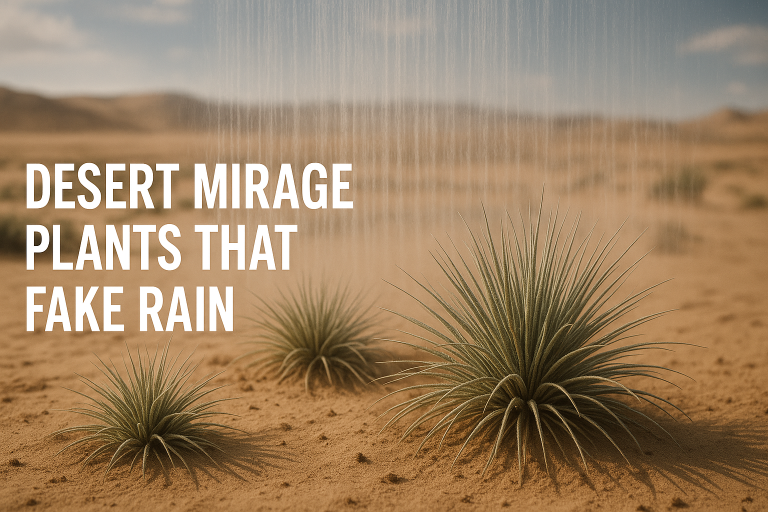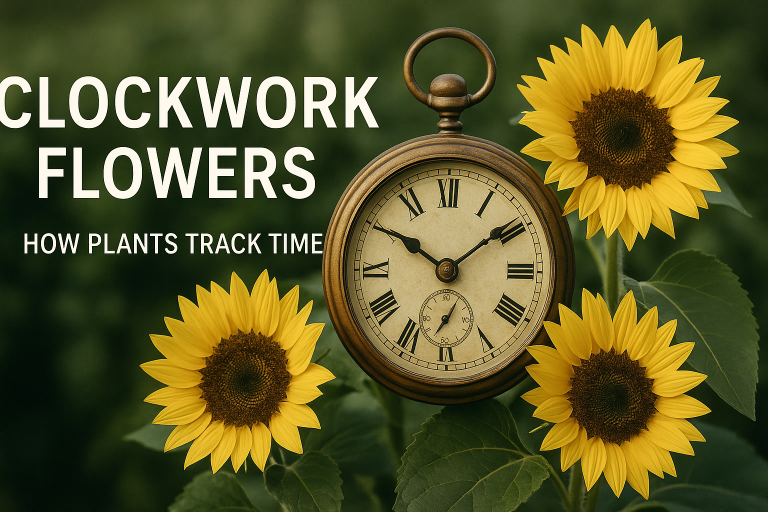In a world battling industrial pollution and contaminated land, nature has provided an unexpected ally—hyperaccumulator plants, often called “metal trees.” These remarkable species absorb toxic heavy metals like nickel, zinc, and even arsenic from the soil, storing them in their leaves, stems, and roots. Unlike traditional cleanup methods that involve costly excavation and chemical treatments, these plants offer a natural, sustainable, and cost-effective solution to soil decontamination.
This article explores the science behind phytoremediation, the most effective metal-absorbing plants, and how they are being used to revive poisoned landscapes, protect food supplies, and even mine valuable metals from the earth.
What Are Metal-Absorbing Trees?
Hyperaccumulators: Nature’s Toxic Sponges
-
Definition: Plants that extract and store unusually high concentrations of metals (100–1000x more than normal plants).
-
Why they evolved: Scientists believe it’s a defense mechanism—herbivores avoid eating metal-laden leaves.
How They Clean Soil
-
Phytoextraction: Roots absorb metals → stored in leaves/stems → harvested and safely disposed of.
-
Phytostabilization: Roots trap metals, preventing spread to water or air.
-
Phytomining: Some metals (like nickel) can be recovered and recycled from burnt plant ash.
Top 5 Metal-Eating Plants & Their Superpowers
| Plant | Metal Absorbed | Where It Grows | Unique Trait |
|---|---|---|---|
| Alpine Pennycress (Thlaspi caerulescens) | Zinc, Cadmium | Europe | Extracts metals 30x faster than competitors |
| Indian Mustard (Brassica juncea) | Lead, Selenium | Asia | Used in Chernobyl cleanup |
| Pycnandra acuminata (New Caledonia Tree) | Nickel | Pacific Islands | Sap is 25% nickel—turns blue-green |
| Sunflower (Helianthus annuus) | Uranium, Cesium | Global | Deployed after Fukushima nuclear disaster |
| Berkheya coddii (African Daisy) | Nickel, Cobalt | South Africa | Stores metals in leaves without dying |
Case Studies: Where Metal Trees Are Saving the Planet
1. Chernobyl’s Sunflower Fields (Ukraine)
-
After the 1986 nuclear disaster, sunflowers were planted to absorb radioactive cesium-137 and strontium-90.
-
Reduced soil toxicity by 80% in some areas.
2. New Caledonia’s Nickel Farms (Pacific Islands)
-
The Pycnandra acuminata tree naturally absorbs nickel from ultramafic soils.
-
Scientists now farm these trees to harvest nickel for batteries—earning the nickname “green mining.”
3. China’s Lead-Polluted Farmlands
-
Indian mustard and ferns removed 2000+ tons of lead from contaminated rice fields.
-
Allowed safe crop production within 5 years.
The Science Behind Phytoremediation
1. Genetic Adaptations
-
Hyperaccumulators have special transporter proteins that shuttle metals into vacuoles (cellular storage units).
-
Some produce metal-binding molecules (like phytochelatins) to detoxify absorbed metals.
2. Soil Microbe Partnerships
-
Bacteria like Arbuscular Mycorrhizal Fungi (AMF) help roots access trapped metals.
-
Certain fungi convert toxic chromium(VI) into harmless chromium(III).
3. Limitations & Challenges
-
Slow process: Can take 5–10 years for full cleanup.
-
Metal toxicity: Some plants die if concentrations are too high.
-
Disposal issues: Harvested plants must be safely incinerated or stored.
Future Innovations: Supercharged Metal Trees
1. Genetic Engineering
-
Scientists at University of Melbourne added a bacterial gene to Arabidopsis, enabling it to absorb 3x more mercury.
-
Future crops could clean soil while still being edible.
2. AI-Assisted Phytomining
-
Drones map metal-rich soils → AI selects the best hyperaccumulators for the job.
-
Companies like Viridian Resources are piloting nickel farms in Oregon.
3. Urban Metal Scrubbers
-
Planting metal-absorbing willows along highways to capture lead from car exhaust.
Can You Grow Metal-Eating Plants at Home?
Best Species for DIY Cleanup
✔ Sunflowers – Easy to grow, good for lead/uranium.
✔ Ferns (Pteris vittata) – Best for arsenic (common in old orchards).
✔ Clover (Trifolium pratense) – Absorbs zinc from backyard soils.
Safety Tips
-
Wear gloves when handling contaminated plants.
-
Don’t compost—dispose of harvested plants as hazardous waste.
-
Test soil first (DIY kits check for lead, arsenic, etc.).
Myths vs. Facts About Metal Trees
❌ Myth: “These plants make soil safe to eat from immediately.”
✅ Fact: They reduce toxicity but multiple harvests are needed.
❌ Myth: “All hyperaccumulators are toxic to touch.”
✅ Fact: Only harmful if ingested (e.g., Pycnandra’s nickel sap).
❌ Myth: “They can clean up oil spills.”
✅ Fact: They only target inorganic metals, not petroleum.
Conclusion: The Silent Guardians of Poisoned Earth
Metal trees prove that nature already holds solutions to human-made disasters. From nuclear wastelands to abandoned mines, these plants work tirelessly to undo our damage—asking nothing in return but a place to grow.
As research advances, we may see entire forests of hyperaccumulators shielding our food, water, and air from toxins. The future of environmental cleanup isn’t just green—it’s rooted in the ground.




Leave a Comment